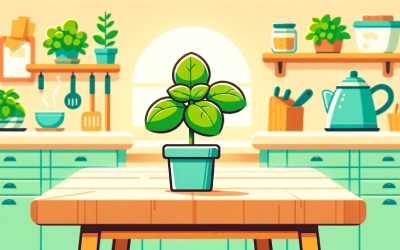Advanced growing tips for experienced gardeners
Welcome to the seasoned gardener's corner! Whether you're looking to up your basil game or experiment with new varieties, we've got some advanced tips to help you grow the most robust and flavorful basil right in your urban garden.
Mastering lighting systems
If you're using artificial lighting, knowing the ins and outs can make a huge difference. LED grow lights are a game-changer, offering a spectrum of light that mimics natural sunlight. Position them about 12-24 inches above your basil plants, and adjust as they grow. Remember, different stages of growth might require varying light intensities – seedlings thrive under gentler light, while mature plants can handle more intensity. Experiment to find what works best for your basil variety, but always aim for that sweet spot of 10-14 hours of light per day.
Variety is the spice of life
Each basil variety comes with its unique personality and needs. Did you know they grow differently too? Genovese basil might prefer a bit more warmth, thriving at temperatures around 20-25°F, while Thai basil can handle slightly cooler environments. The key is to observe and tweak – notice how different varieties respond to your care and adjust your watering, lighting, and feeding accordingly.
Pruning techniques for different basil varieties
Each variety of basil has unique pruning needs to maximize its health and flavor. Understanding these can enhance your gardening experience.
- Classic Genovese Basil responds well to regular topping off the central stem, promoting a fuller plant and more leaves for harvesting.
- Thai Basil, with its anise-like flavor, benefits from selective pruning of terminal buds to encourage lateral growth for a denser yield.
- Lemon Basil, known for its citrusy notes, prefers light pruning. Gentle snipping of the tips stimulates growth without excess stress.
- Purple Basil demands frequent pinching to maintain vibrant color and intense flavor, focusing on both flower buds and young leaves.
- Spicy Globe Basil, ideal for small spaces, requires minimal pruning, with light trimming to maintain shape and encourage leaf production.
- Sweet Basil, popular for its versatility, benefits from consistent pinching of the tips, especially before flowering, to ensure a continuous supply of flavorful leaves.
How to trim basil to promote growth
Alright, so you’ve got yourself some basil, and you want it to thrive, right? Trimming it is like giving it a spa day — it refreshes it and keeps it looking sharp.
Here’s the deal: when your basil hits about 6 inches tall, it’s time to get out those scissors. Aim to cut just above a set of leaves, about a quarter inch above. Don’t be shy, but don’t go overboard either. You want to leave some leaves behind to keep the plant photosynthesizing like a champ. And here’s a pro tip: never snip more than one-third of the plant at a time. That way, you won’t stress it out.
Experiment with hydroponics
Ready to take it up a notch? hydroponics can be your new best friend. This soil-less growing method can result in faster growth and higher yields. Basil thrives in hydroponic systems, absorbing nutrients directly from water. Plus, it's a fun way to grow your herbs all year round, without the fuss of soil. Just remember to monitor your nutrient solutions and pH levels to keep your basil happy.
And that's that! Looking for more guides about basil? Check out our related articles below.





